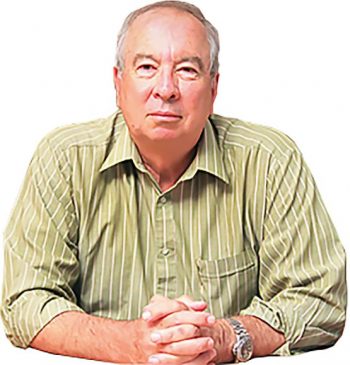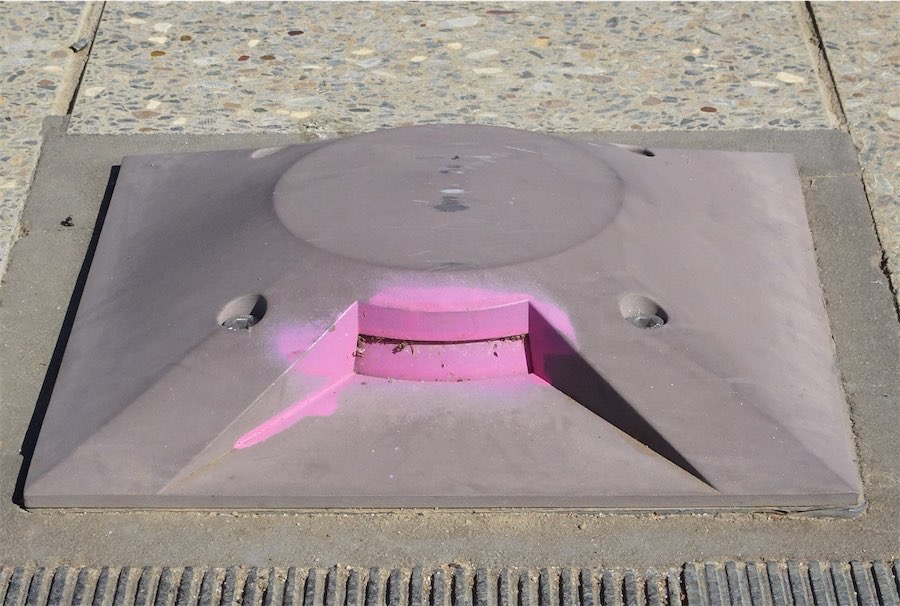“Whimsy” columnist CLIVE WILLIAMS sees faces in everything. And there’s a word for that…
SEEING faces in everyday objects isn’t that unusual. The phenomenon’s technical name is “facial pareidolia” (pareidolia being pronounced par-i-doh-lee-a).

Scientists at the University of Sydney have found that not only do we see faces in everyday objects, but our brains even process them for emotional expression, much as we do with real faces, rather than discarding them as false detections.
Facial pareidolia is likely a product of our evolution. Researchers note that the phenomenon has been observed among monkeys as well. It’s a prerequisite for social interaction. More generally it gives us the ability to recognise individual faces. Faces are “special” stimuli, for which we have developed unique perceptual and recognition processes.
This is of crucial social importance for humans (and other species) and evolutionarily necessary for survival. Without this skillset we could be continually taking home the wrong partner from the supermarket. Moreover, we’re so good at facial pareidolia that we are able to identify individual humans from among millions of other humans.
However, we don’t do so well with recognising individuals in other species. Most of us probably have difficulty identifying individual magpies even though we see the same ones every day. Magpies clearly are much better at it than us. Magpies can not only identify other magpies, but also recognise humans that live in their patch – and human interlopers who are swoopable.
I first started paying attention to faces in objects about 20 years ago when I travelled with a photographer who was always on the lookout for good examples. I’ve been doing the same ever since.
At first, I worried it might be an early indicator of dementia, but apparently not. Where was I? Oh, yes… At one time pareidolia was also considered to be a symptom of psychosis, but it’s now seen as a normal human tendency.
All photos: Clive Williams
Indeed, facial pareidolia apparently indicates one has a creative side. Pareidolia can be a boon to artists when it results in inspiration – as it clearly did with some of Salvador Dali’s paintings.
An extreme example of facial pareidolia is “Jesus toast” – where devotees see images of Jesus, the Virgin Mary or even Elvis in their toast.
In 2017, a man named George Maley, from Windham, New York, was trying to sell on eBay a piece of buttered toast that he claimed bore the face of Jesus, for an asking price of $25,000. Another famous instance was a grilled-cheese sandwich with the face of the Virgin Mary.
I’m surprised that no one has produced a toaster that creates a range of selected images on toast, but perhaps I’m ahead of my time there.
During the 9/11 attacks, television viewers supposedly saw the face of Satan in the clouds of smoke billowing out of the World Trade Center. Another example of facial pareidolia occurred during the 2019 fire at Notre Dame Cathedral when some observers claimed to have seen the face of Jesus in the flames. Other common transitory locations are froth on water, the surface of the moon, and cumulus clouds.
Walking around Lake Burley Griffin, there are several physical examples to look out for – as shown here.
Jokes about facial pareidolia don’t seem to work because you need to see the image. But if you are motivated to see some you can find “30 Funny Examples of Pareidolia In Everyday Objects” online at boredpanda.com https://www.boredpanda.com/pareidolia-faces-everyday-objects/?utm_source=google&utm_medium=organic&utm_campaign=organic
Clive Williams is a Canberra columnist
Who can be trusted?
In a world of spin and confusion, there’s never been a more important time to support independent journalism in Canberra.
If you trust our work online and want to enforce the power of independent voices, I invite you to make a small contribution.
Every dollar of support is invested back into our journalism to help keep citynews.com.au strong and free.
Thank you,
Ian Meikle, editor













Leave a Reply